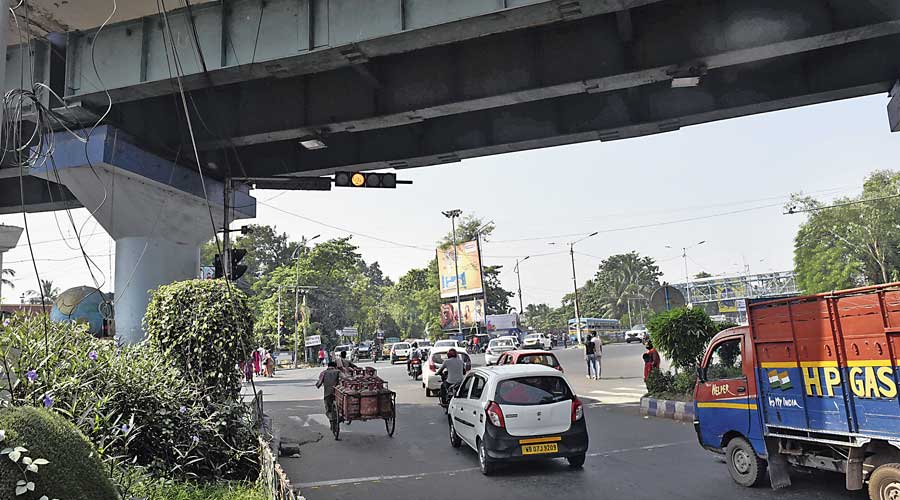- The signal at the Chingrighata crossing on EM Bypass turned amber for four seconds
- The traffic light at the Deshapriya Park crossing was amber for around three seconds
- The amber light came on at the Stephen Court intersection on Park Street for less than four seconds
The duration of the amber light is not uniform across the city.
Several motorists said that because of lack of uniformity, they often faced prosecution for crossing the ‘stop line’ or violating the signal.
The Telegraph drove around the city on Tuesday and found that the duration for which the signal remains amber before turning red varies from one crossing to another.
On Saturday evening, one man was killed and six others injured after being hit by a speeding car that had not slowed down when the light turned amber at the Chingrighata crossing.
The amber light is a message to motorists to slow down as the signal is about to turn red, but across the city the difference in the duration of the light to stay amber confuses commuters.
Because of this many who think that they will cross the signal before it turns red tend to accelerate and brake at the last minute to avoid jumping the signal which by then turns red.
When the amber light comes on, the vehicles that have reached the “stop line” are not supposed to stop. However, those that are approaching the “stop line” have to slow down and bring the vehicle to a halt when the signal turns red.
Manisha Agarwal, a New Town resident who drives to her office in Park Street, said she often got confused whether to slow down or speed through when the light turned amber.
“I generally slow down but often the vehicle right behind speeds up and gets dangerously close to my car. I am faced with a dilemma. If I brake and bring the car to a stop, the vehicle right behind me can rear-end my car,” said Agarwal.
Another officer said the waiting period for the amber light is usually between three and five seconds, depending on the volume of traffic.
“We keep revising the duration based on the real-time feedback from intersections,” said an officer in Lalbazar.
